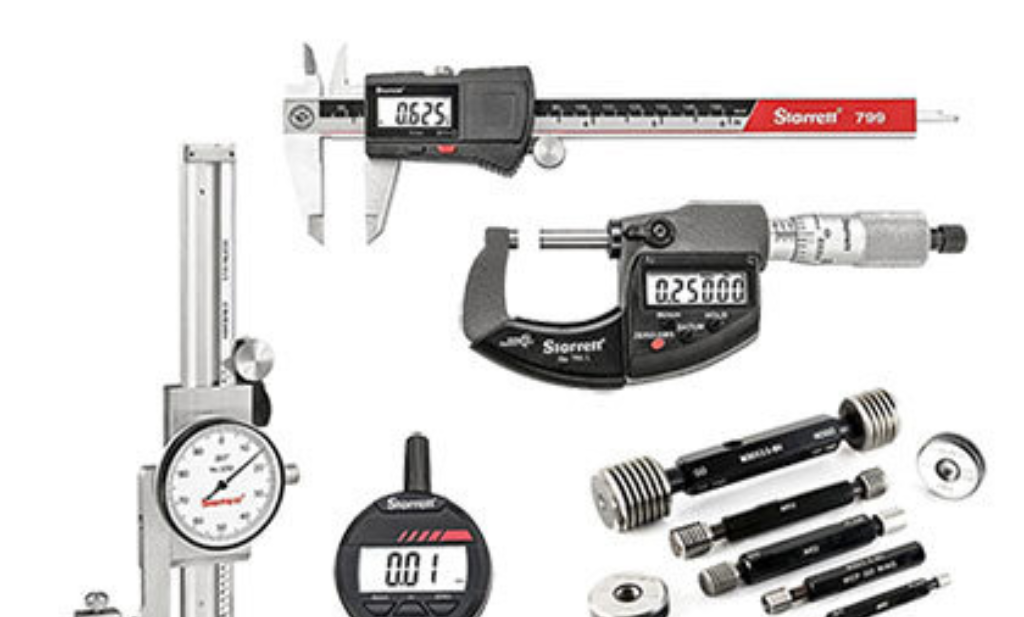Any quality control procedure would be incomplete without the use of hand tools for dimensional inspection. They are used to check if a product or part satisfies the necessary requirements by measuring and inspecting various product or part dimensions. In this post, we’ll look at 10 different kinds of hand tools for dimensional inspection and discuss when to use each one.
1. Calipers:
Calipers are used to measure the distance between two points, as well as thickness and diameter. They are used in a variety of industries, including metalworking, engineering, and woodworking.
2. Micrometers:
Micrometers are used for measuring small distances, thicknesses, and diameters. They are extremely precise and widely used in industries such as manufacturing and quality control.
3. Height gauges:
Height gauges: Height gauges are used to measure an object’s height, including its vertical distance from a reference plane. They are useful in industries such as construction and manufacturing.
4. Depth gauges:
Depth gauges are used to determine the depth of a hole or recess. They’re useful in woodworking, metalworking, and other industries that require precise depth measurements.
5. Thread gauges:
Thread gauges are used to determine the pitch, diameter, and thread angle of screws, bolts, and other threaded objects. They are used in the manufacturing and quality control processes.
6. Feeler gauges:
Feeler gauges are used to determine the clearance or gap between two parts. They are widely employed in the automotive and aerospace industries.
7. Dial indicators:
Dial indicators are used to determine the distance or movement of an object. They are frequently employed in machining and manufacturing.
8. Surface roughness testers:
Surface roughness testers: These devices are used to determine the roughness or smoothness of a surface. They’re common in industries like automotive and aerospace.
9. Radius gauges:
Radius gauges are used to determine the radius of a curve or surface. They are widely used in woodworking, metalworking, and other industries where precise curve measurements are required.
10. Bore gauges:
Bore gauges are used to determine the diameter of a hole or bore. They are widely used in manufacturing and quality assurance.
The type of measurement required and the industry in which it will be used determine which dimensional inspection hand tool to use. Each tool has advantages and disadvantages, and choosing the right tool is critical for precise measurements.
It is essential to comply with best practices for using dimensional inspection hand tools in addition to knowing which tool to use. Here are some pointers to remember:
Select the appropriate tool for the job: As previously stated, each tool has advantages and disadvantages. When selecting the appropriate tool, consider the type of measurement required as well as the industry in which it will be used.
Zero the tool before use: To ensure accurate measurements, zero the tool before use. When no measurements are being taken, the tool is set to read zero.
Use the tool correctly: Each tool comes with its own set of instructions for use. Follow these steps to ensure precise measurements and avoid damage to the
It is essential to comply with best practices for using dimensional inspection hand tools in addition to knowing which tool to use. Here are some pointers to remember:
- Select the appropriate tool for the job: As previously stated, each tool has advantages and disadvantages. When selecting the appropriate tool, consider the type of measurement required as well as the industry in which it will be used.
- Zero the tool before use: To ensure accurate measurements, zero the tool before use. When no measurements are being taken, the tool is set to read zero.
- Use the tool correctly: Each tool comes with its own set of instructions for use. Follow these steps to ensure precise measurements and avoid damage to the tools.
Clean and maintain the tool: Cleaning and maintaining the tool on a regular basis will ensure that it remains accurate and reliable. Follow the cleaning and maintenance instructions provided by the manufacturer.
Regularly calibrate the tool: Even with proper use and maintenance, dimensional inspection hand tools can lose accuracy over time. Calibration on a regular basis can ensure that the tool remains accurate and reliable.
The type of measurement required and the industry in which it will be used determine which dimensional inspection hand tool to use. Each tool has advantages and disadvantages, and choosing the right tool is critical for precise measurements.
You can ensure that your dimensional inspection hand tools provide accurate and reliable measurements by following these guidelines. To get the best results, choose the right tool for the job, use it correctly, and maintain it on a regular basis.
Conclusion
Finally, dimensional inspection hand tools are critical for quality control in a wide range of sectors. Knowing which tool to use and how to use it accurately can help ensure that your measurements are precise as well as consistent. You can ensure that your quality control process is effective and efficient by following best practices for using dimensional inspection hand tools.
Call us to discuss your calibration, test or repair needs at:
713.944.3139.



